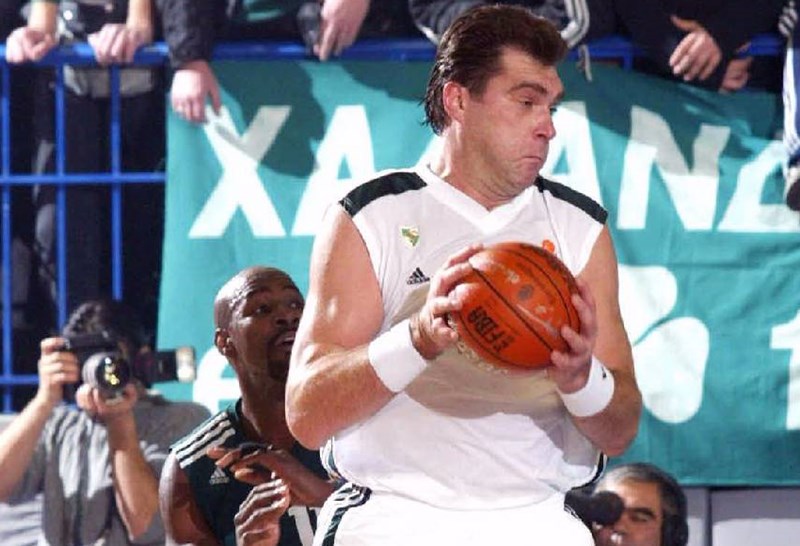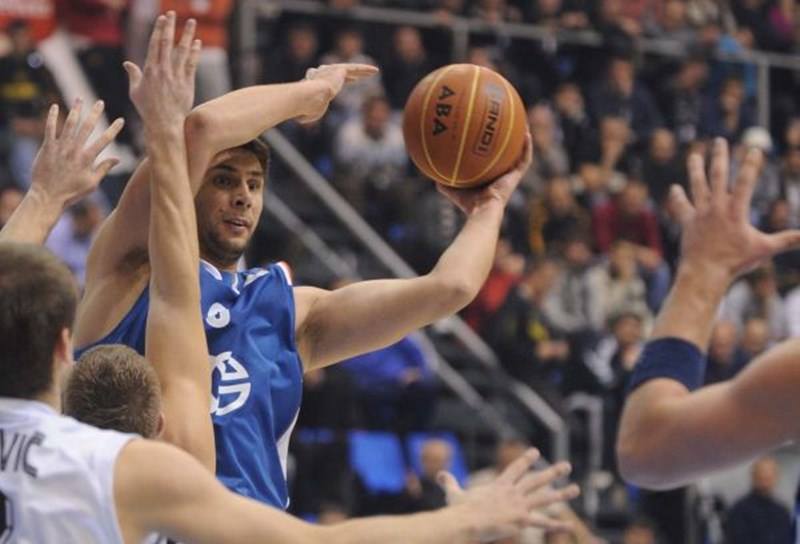By Antonis Stroggylakis/ info@eurohoops.net
“A basket makes one man happy while an assist makes two men happy.”
While the origin of the above quote seems to be a mystery (for obvious reasons, we like to think that Toni Kukoc was the first to say it), its point is quite clear. Ball movement that creates baskets as the product of teamwork and assists is highly praised by coaches, and not only them. It is the core of every well-structured offense. It can make underdogs defeat favorites. If done right, it can break the foundations of even the toughest defenses. And in these situations, passing centers in particular can affect the game in ways that are still being discovered in the ever-evolving world basketball. Their opponents must not only keep them from scoring, but also fear the moment when these centers decide to pass the ball. In the role of assist-maker, they are extra dangerous, highly effective and often game-changing.
Eurohoops.net loves passing centers…a lot! So we decided to present our choices for the Top 5, plus one, passing centers in Turkish Airlines Euroleague history, five big men who are distinguished by their rich passing skills and their notorious ability to provide assists.
NIKOLA PRKACIN (CIBONA ZAGREB, EFES PILSEN, PANATHINAIKOS ATHENS)
Who would have thought that a man whose physicality and game approach were reminiscent of a battering ram could also be so skilled and delicate when it came to his passing? Perhaps that is what impresses us most about the curious case of Nikola Prkacin. The Croatian center could use brute force in order to make quick work of his opponents, but when he decided to distribute the ball and give his teammates the chance to score, his moves combined quick thinking with great finesse.
Prkacin could easily monitor the moves of everyone on the court, both friend and foe, in order to find the right coordinates to dish his assists. He first made his passing skills quite obvious in the 2002-03 Euroleague season with Cibona Zagreb, when he averaged more than 2 assists for a total of 48. While he came close to that number only once again, in 2005-06 with Efes Pilsen, when he had 41 assists in 22 games,many of his passes had a “wow factor”.
His career high in assists came during one of his best Euroleague game, with Cibona on January 16, 2002 against Ural Great. Prkacin dished 7 assists that night despite while also attempting 15 (!) two-point shots, a prime example of how the Croatian center could neatly balance scoring with passing. He tied this number versus AEK Athens three weeks later.
IOANNIS BOUROUSIS (AEK, OLYMPIACOS PIRAEUS, EA7 EMPORIO ARMANI MILAN, REAL
MADRID, LABORAL KUTXA VITORIA GASTEIZ)
Those who have followed the Greek center throughout his career will not be surprised by this selection. Despite being a pivot, Bourousis always liked to play away from the basket. And apart from his affinity for shooting the ball, he also loved to pass to his teammates, either from the low post or from beyond the arc. But it is only very recently that we have truly seen his passing abilities fully unfold.
Why? The reason is simple. It’s a big part of the role he plays in his new team’s offense. As one of the leaders of Laboral, Bourousis has found the perfect ground in which to plant the seeds of the game he wants to develop. The freedom and trust that head coach Velimir Perasovic has given to him, along with the style of basketball that Laboral plays, allow Bourousis’s passing game to blossom like never before. The numbers do not lie.
In this season’s first 15 games, Bourousis has dished 8 more assists (33) than his current full-season Euroleague highs: 25 with Real Madrid in both 2013-14 and 2014-15. Moreover, Bourousis does not simply set up teammates with opportunities to score, but often tricks opponents with unpredictable moves and skilled passing. He is becoming better and better, but also more spectacular, in his role as a low-post playmaker and it will be interesting to see what he can do next in that that area of the game.
DEJAN TOMASEVIC (BUDUCNOST PODGORICA, TAU CERAMICA, PANATHINAIKOS
ATHENS)
Coming from the great “Plavi School”, there was almost no way that Dejan Tomasevic would not carry a certain degree of smartness to go with his talent. He not only learned the fundamentals, but sprinkled even more attributes into his game, as well – but those of a point guard, not a center.
While exceptionally effective in scoring or rebounding, Tomasevic’s high basketball IQ allowed him to become a brilliant passing center. His smooth ball-handling and correct decision-making supported his ability to always be ready to make the ideal assist from anywhere on court. Indeed, he was so fast at recognizing good passes that was sometimes one step ahead of the teammate meant to receive the ball.
Tomasevic reached the absolute peak of his creativity while he was playing for Valencia in the 2003-04 Euroleague. During that season, he dished almost 4 assists per game in 31 minutes of playing time. That was much more than his previous best season in Euroleague, with Tau Ceramica in 2001-02, when he averaged 2 assists in 28 minutes per game. He set his personal high for assists against ASCO Slask Wroclaw on January 28, 2004 when 11 of his passes turned into baskets by his Valencia teammates.
ANTE TOMIC (REAL MADRID, FC BARCELONA LASSA)
In the late 18th century, English philosopher Jeremy Bentham (yes, you also know that name from the LOST TV series) designed a building called “Panoptikon”. Its purpose? To put it simply: a structure to allow one man to be able to watch all inmates at an institution without them knowing that they are being observed. Now, if Bentham knew that more than 200 years later, in a sport called “basketball”, a big guy from Croatia would absolutely personify his plans, perhaps he would have chosen the name “Ante Tomic” for it.
The pivot of Barcelona definitely knows where ALL of his teammates are at every single moment of every offense run by his team. No matter where he stands on court, Tomic’s height strengthens his already powerful court vision and allows him to scan the field and pass to anyone, anywhere and at any time for a basket. His handwork is so elegant that makes sure his Barcelona teammates receive the ball with the ideal velocity and in the ideal position to score. Tomic currently averages 2.3 assists in 21 minutes per game. That’s a big number considering the fact that he also scores 12 points per game. But his assists total doesn’t do full justice to the impact of his passing on Barcelona’s game. When he touches the ball near the low post, the opposing team is equally afraid of his passing and his scoring, so coaches who face Barcelona ask their players to stop him from distributing the ball, first and foremost. Then, they worry about his scoring. That’s how good of a passer he is.
What’s more, Tomic constantly improves in that aspect of his game. For example he set a new personal record this year with the 7 assists in his team’s win vs. Lokomotiv Kuban Krasnodar on the 12th of November. Some of those passes even deserve “assist of the year” consideration. Yet, no matter how he amazes us, we still wonder if Tomic is the last of his line. The final scion of a pivot family that will soon be forgotten, a rare specimen of a breed that will be nearly extinct when the “undersized centers” prevail. Will that happen?
Perhaps not, though, because Ante Tomic certainly should be an inspiration to young seven-footers like him to enhance their passing games to the point of becoming extremely valuable, and almost irreplaceable, to their teams, just as he is. One of the main reasons for this is how smartly, how often and how well Tomic assists his teammates. Even if he’s not a point guard, he certainly carries the same load as one, since what he does for Barcelona actually defines the term “playmaking”.







